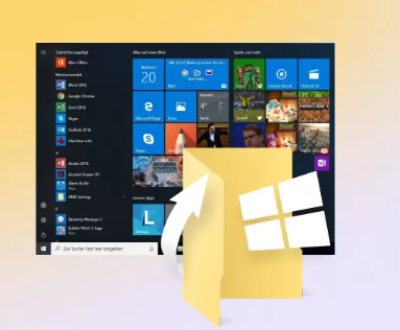In the rapidly evolving world of digital storage, solid-state drives (SSDs) and USB flash drives stand out as two prominent types of storage solutions. Though they share some similarities, they cater to different needs and come with distinct characteristics. Understanding these differences can help you make informed decisions about which storage medium is right for your specific requirements.
1. Basics
Solid-State Drives (SSDs)
Solid-state drives (SSDs) are storage devices that use NAND-based flash memory to store data. Unlike traditional hard disk drives (HDDs) that use spinning disks and mechanical read/write heads, SSDs operate entirely through electronic components. This absence of moving parts contributes to their superior speed, reliability, and durability.
USB Flash Drives
USB flash drives, commonly referred to as thumb drives or pen drives, are portable storage devices that also use NAND flash memory. They connect to a computer or other devices via a USB port. While they are similar in memory technology to SSDs, their form factor and intended usage differ significantly.

2. Technology and Performance
SSD Technology
SSDs use NAND flash memory cells to store data. There are various types of NAND flash, including SLC (Single-Level Cell), MLC (Multi-Level Cell), TLC (Triple-Level Cell), and QLC (Quad-Level Cell). Each type has its own balance of performance, durability, and cost. SSDs are designed to be installed inside computers or external enclosures, and they generally offer high performance in terms of read and write speeds.
Performance: SSDs excel in read and write speeds compared to other storage devices. Modern SSDs can achieve speeds ranging from 500 MB/s to 7000 MB/s, depending on the interface (SATA or NVMe). The performance is due to the advanced controller technology and the use of high-speed memory.
Endurance: SSDs have a limited number of write cycles. However, modern SSDs come with wear leveling and over-provisioning features to extend their lifespan. High-end SSDs, especially those using SLC NAND, are designed for intensive workloads and offer greater endurance.
USB Flash Drive Technology
USB flash drives also utilize NAND flash memory, but they are designed for portability and ease of use rather than high performance. They come in various capacities, typically ranging from a few gigabytes to 1 terabyte.
Performance: USB flash drives generally offer lower read and write speeds compared to SSDs. Performance can vary significantly based on the USB version (e.g., USB 2.0. USB 3.0. or USB 3.1) and the quality of the flash memory used. USB 3.0 and 3.1 drives can offer speeds up to 300 MB/s or more, but they still fall short compared to SSDs.
Endurance: USB flash drives are less robust than SSDs in terms of write endurance. They are designed for less frequent read/write operations and may wear out faster under heavy usage. However, for typical use cases, they are generally sufficient.
3. Form Factor and Design
SSDs
SSDs are typically installed inside computers or external enclosures. They come in various form factors:
2.5-inch SATA SSDs: These are the most common and are designed to fit into the same bays as traditional HDDs. They use the SATA interface for data transfer.
M.2 SSDs: These are compact and designed for laptops and ultrabooks. They come in different lengths and can use SATA or NVMe interfaces.
PCIe/NVMe SSDs: These are high-performance SSDs that connect directly to the PCIe bus on a motherboard, offering significantly faster speeds compared to SATA SSDs.
USB Flash Drives
USB flash drives are designed to be compact and portable. They typically feature a USB connector that plugs directly into a computer’s USB port. They come in a variety of shapes and sizes, including:
Standard Thumb Drives: These are the most common and come in various storage capacities and designs.
Retractable or Capless Designs: These feature mechanisms to protect the USB connector from damage and dust.
OTG (On-The-Go) Drives: These include connectors for both USB-A and USB-C, allowing them to be used with various devices, including smartphones and tablets.
4. Usage Scenarios
SSDs
Primary Storage for Computers: SSDs are often used as the primary storage device in computers due to their high speed and reliability. They significantly improve boot times, application loading times, and overall system responsiveness.
External Storage: External SSDs are used for high-speed data transfer, gaming, and video editing. They are ideal for users who require fast access to large files or need a portable solution with high performance.
Data Recovery and Backup: SSDs are also used for critical data recovery and backup solutions, given their reliability and durability.
USB Flash Drives
Portable Data Storage: USB flash drives are widely used for transferring files between computers and other devices. Their compact size and ease of use make them a convenient option for everyday file transfers.
Backup and Archiving: They are often used for creating backups of important documents and files due to their affordability and portability.
Bootable Media: USB flash drives can be used to create bootable media for installing operating systems or running diagnostic tools.
5. Cost and Capacity
SSDs
Cost: SSDs are generally more expensive per gigabyte compared to USB flash drives. However, the price has been decreasing over time, making SSDs more accessible for consumers.
Capacity: SSDs are available in larger capacities, ranging from 250 GB to several terabytes. This makes them suitable for users who need substantial storage space for applications, games, and large files.
USB Flash Drives
Cost: USB flash drives are typically less expensive per gigabyte. They offer a cost-effective solution for users who need portable storage without a significant investment.
Capacity: USB flash drives come in various capacities, from 8 GB to 1 TB. They are suitable for users who need portable storage for smaller amounts of data.
6. Security and Data Protection
SSDs
Encryption: Many SSDs support hardware encryption, which enhances data security. This feature is particularly useful for protecting sensitive information on high-performance storage devices.
Error Correction: SSDs include advanced error correction algorithms to ensure data integrity and reliability over time.
USB Flash Drives
Encryption Options: Some USB flash drives offer encryption features, but this varies by model. Software-based encryption can also be applied to protect data on flash drives.
Durability: USB flash drives are generally less durable than SSDs and can be more susceptible to physical damage due to their small size and portability.
SSDs offer high performance, larger capacities, and are typically used as primary storage solutions or for high-speed external storage. On the other hand, USB flash drives provide a convenient, portable storage option for everyday file transfers and backups.
As technology continues to advance, both SSDs and USB flash drives will likely evolve, offering even more options for managing and storing data.
About us and this blog
Panda Assistant is built on the latest data recovery algorithms, ensuring that no file is too damaged, too lost, or too corrupted to be recovered.
Request a free quote
We believe that data recovery shouldn’t be a daunting task. That’s why we’ve designed Panda Assistant to be as easy to use as it is powerful. With a few clicks, you can initiate a scan, preview recoverable files, and restore your data all within a matter of minutes.

 Try lt Free
Try lt Free Recovery success rate of up to
Recovery success rate of up to









